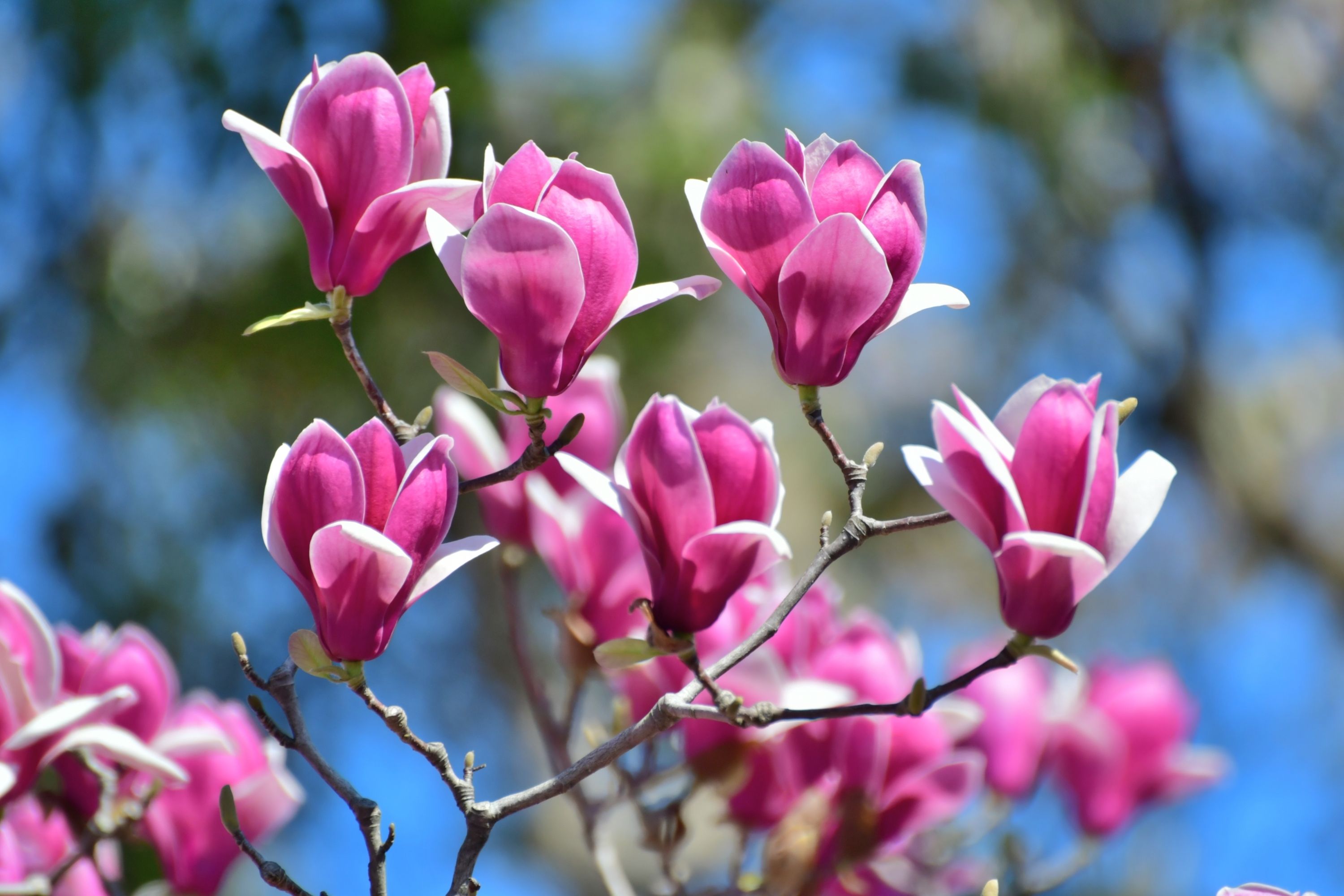Lily magnolia
(Magnolia liliiflora)

Description
Magnolia liliiflora, commonly known as the Lily Magnolia, is a deciduous shrub or small tree that belongs to the Magnoliaceae family. This beautiful flowering plant is native to China and is widely grown as an ornamental plant in many parts of the world. In this encyclopedia-style article, we will delve deep into the various aspects of Magnolia liliiflora, including its physical characteristics, habitat, cultivation, propagation, and uses. Physical Characteristics of Magnolia liliiflora Magnolia liliiflora is a slow-growing shrub or small tree that can reach up to 5-6 meters in height. Its leaves are simple, alternate, and ovate to elliptic in shape, with a glossy dark green upper surface and a paler green underside. The leaves are approximately 10-15 cm long and 5-10 cm wide. The flowers of Magnolia liliiflora are its most distinguishing feature. They are large, showy, and fragrant, with a diameter of 8-12 cm. The flowers are usually pink, but there are also white and purple varieties. Each flower has six tepals, which are petal-like structures that are not clearly differentiated into petals and sepals. The tepals are thick and leathery and have a waxy texture. The flowers appear in early spring before the leaves emerge, and they continue to bloom sporadically throughout the growing season. The fruit of Magnolia liliiflora is a cone-like structure that is 3-5 cm long and 2-3 cm wide. The fruit contains numerous reddish-brown seeds that are covered in a fleshy aril. The fruit ripens in late summer or early fall and splits open to release the seeds. Habitat and Distribution of Magnolia liliiflora Magnolia liliiflora is native to central and southern China, where it grows in mixed deciduous forests and along riverbanks. The plant is also widely cultivated as an ornamental plant in many parts of the world, including Japan, Korea, the United States, and Europe. Cultivation of Magnolia liliiflora Magnolia liliiflora is a hardy plant that is easy to grow and requires minimal care. The plant prefers full sun to partial shade and well-drained soil that is rich in organic matter. It is tolerant of a wide range of soil pH, but it prefers slightly acidic to neutral soils. The plant is also drought-tolerant and can withstand moderate levels of salt spray. Propagation of Magnolia liliiflora Magnolia liliiflora can be propagated by seeds, cuttings, or layering. Seeds should be sown in the fall and kept moist until they germinate in the spring. Cuttings can be taken in the summer and rooted in a mixture of sand and peat moss. Layering involves bending a low-hanging branch to the ground and burying a portion of it under the soil. The buried portion will develop roots, and the branch can be severed from the parent plant once it has established. Uses of Magnolia liliiflora Magnolia liliiflora is primarily grown as an ornamental plant for its beautiful flowers. The plant is suitable for use as a specimen plant, a border plant, or as part of a mixed shrub border. The flowers are also used in floral arrangements and as a cut flower. The plant is also used in traditional Chinese medicine to treat a variety of ailments, including fever, abdominal pain, and diarrhea. The bark and leaves of the plant are used to make a tea that is said to have medicinal properties.
Taxonomic tree:







